Are Shifting Global Tariffs Squeezing Your Lingerie Business Profits in 2025?
Feeling the pinch from rising import costs? Global tariffs, especially US policies on Chinese goods adding over 20% extra cost, are making it tough to stay competitive.
Yes, 2025's tariffs, particularly the ~43.1% combined duty on many Chinese goods versus ~15.6% for Bangladesh, directly impact lingerie costs. Exploring alternatives like Bangladesh manufacturing, managed correctly, can offer ~15-16% landed cost savings and protect your margins.
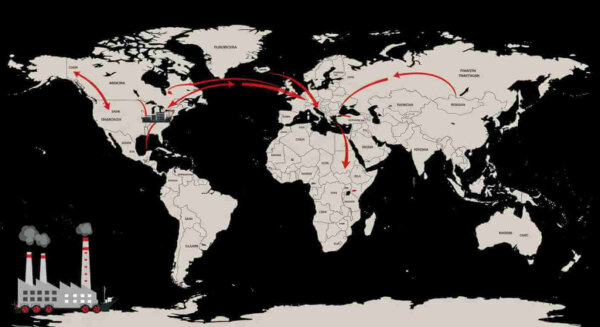
The world of trade feels pretty shaky right now, doesn't it? As the founder of HAVING, a lingerie manufacturer with feet firmly planted in both China and Bangladesh, I've seen these shifts firsthand. Many of our American clients are struggling with these new costs. It’s not just about higher prices; it's about finding reliable ways to keep your business thriving. Let me walk you through what's happening and how you can navigate it.
How Are US Tariff Policies Directly Impacting Your Lingerie Costs?
Worried about unpredictable US tariffs hitting your bottom line? These policies directly target goods from China, adding significant costs (over 20% extra) to your imports.
The US has added significant punitive tariffs (around 27.5% on top of base rates) on many Chinese goods, including lingerie. This pushes combined duties over 43%, directly increasing your landed costs and making it harder to compete.

It feels like every few months there's a new trade policy headline causing uncertainty. For businesses importing lingerie, especially from China, the impact is very real. The main issue we're seeing is the extra layer of tariffs imposed by the US government. They call it various things (like Section 301 tariffs), but the result is the same: higher costs for you.
Understanding the US Tariff Structure
The US government's approach has added significant pressure. They've implemented these extra tariffs, often around 27.5%, specifically targeting Chinese products. When added to the base tariff (around 15.6%), the total duty exceeds 43% for many lingerie items. For labor-intensive goods like underwear, where price points are often tight, this extra cost makes a huge difference. It's not just a small increase; it fundamentally changes the cost calculation many businesses relied on for years. We saw this affect many of our partners who sourced exclusively from China. Suddenly, their landed costs jumped, forcing them to rethink their entire sourcing strategy.
Are Other Regions Like Southeast Asia Also at Risk?
There's also talk about the US looking closely at other countries, like Vietnam. Because Vietnam has a large trade surplus with the US, some analysts predict they might face tariffs too, possibly hitting textiles. While Bangladesh hasn't been explicitly targeted in the same way for broad tariffs yet, relying solely on any single country outside China carries its own set of risks. This uncertainty highlights why having flexible production options, like our dual setup in China and [Link to HAVING's Bangladesh Ops Page] Bangladesh, becomes so valuable. It allows us to pivot based on the changing trade winds.
How Is China Responding and What Do Regional Agreements Mean for You?
Seeing China adjust its trade policies? They're opening up in some areas while regional agreements like RCEP are changing trade flows within Asia.
China offers zero tariffs for Least Developed Countries like Bangladesh, supporting its textile growth. Agreements like RCEP reduce regional tariffs, making Southeast Asian supply chains potentially more integrated but also complex.
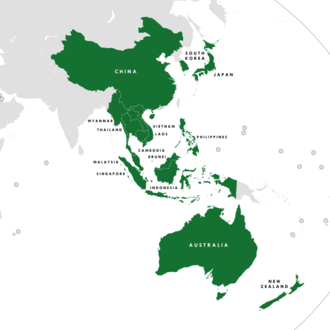
It's not just about US policies; China and the rest of Asia are also making moves that affect your supply chain. China, for instance, has tried to support development in other countries. They implemented zero tariffs on almost all goods from Least Developed Countries (LDCs), which includes Bangladesh. This has definitely helped Bangladesh grow its textile sector.
China's Zero Tariff Policy for LDCs
This policy has been a significant boost for countries like Bangladesh. It means raw materials or components sourced from China for production in Bangladesh might face lower duties, contributing to overall cost management. However, there's a catch. Bangladesh is expected to "graduate" from LDC status around 2026. While the immediate impact on trade preferences (like the EU's GSP, discussed later) might take longer, it's something we are watching closely. Planning needs to account for these potential future shifts.
Regional Trade Agreements (RCEP, ASEAN FTA)
At the same time, agreements like the Regional Comprehensive Economic Partnership (RCEP) and the ASEAN Free Trade Area (ASEAN FTA) are reducing tariffs within Asia. This makes it easier and potentially cheaper to move components or materials between countries like China, Vietnam, and Cambodia. It encourages more integrated regional supply chains. While this offers opportunities, it also means the landscape is constantly shifting. Relying on a partner who understands these regional flows is key. For HAVING, our presence in both China and Bangladesh allows us to navigate these regional dynamics effectively. We can source materials optimally within the region based on these agreements.
What Does This Mean for Lingerie Sourcing Specifically?
Feeling the pressure to shift production due to costs and tariffs? The lingerie industry is seeing major changes, with production moving and new compliance rules emerging.
Rising costs in China plus US tariffs are pushing brands to places like Vietnam and Bangladesh. Bangladesh offers lower labor costs ($0.7-1/hr vs China's $3-4/hr) and tariff advantages for the US market, though EU ESG rules add new pressures.
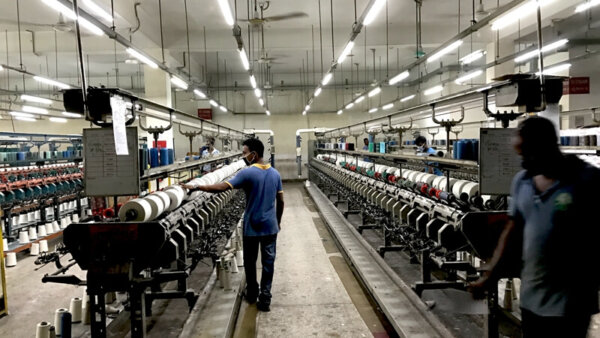
These big-picture tariff shifts have very specific impacts on sourcing underwear and lingerie. Costs are going up in traditional manufacturing hubs like China, not just because of tariffs but also rising labor costs (around $3-4 per hour). This forces brands like yours to look for alternatives. Vietnam became a popular choice, seeing significant export growth. But as mentioned, it might face its own tariff risks.
The Shift to Southeast Asia: Vietnam vs. Bangladesh
Many companies moved capacity to Vietnam, attracted by lower labor costs compared to China. However, Bangladesh offers a different set of advantages. Its labor costs are even lower (around $0.7-1 per hour), and crucially for the US market, products shipped from Bangladesh avoid the steep Section 301 tariffs applied to Chinese goods. Even considering longer lead times and potentially higher shipping costs, the overall landed cost savings typically average around 15-16%. For European markets, Bangladesh also benefits from the EU's Generalized System of Preferences (GSP) for now, allowing duty-free access. But there's a potential future challenge: Bangladesh might lose its LDC status soon, which could affect its EU GSP benefits down the line, maybe around 2029. This makes long-term planning essential.
The Rise of ESG Compliance
Another huge factor, especially for the European market, is ESG (Environmental, Social, Governance) compliance. The EU is pushing hard for sustainability, requiring things like using a certain percentage of sustainable materials in textiles. This adds complexity and cost, as manufacturers need to invest in compliant materials and processes. China is also promoting sustainable materials. At HAVING, we've integrated ESG considerations into both our China and [Link to HAVING's Sustainability Page] Bangladesh operations, ensuring we meet these evolving standards.
How Can You Adapt Your Strategy Without Sacrificing Quality?
Need to cut costs but worried about maintaining quality if you switch suppliers? Adapting requires flexibility, careful supplier vetting, and balancing cost with quality.
Build flexibility by working with suppliers having multi-region options (like China + Bangladesh). Vet suppliers thoroughly for stability and quality systems. Don't just chase the lowest price; ensure quality through consistent monitoring.
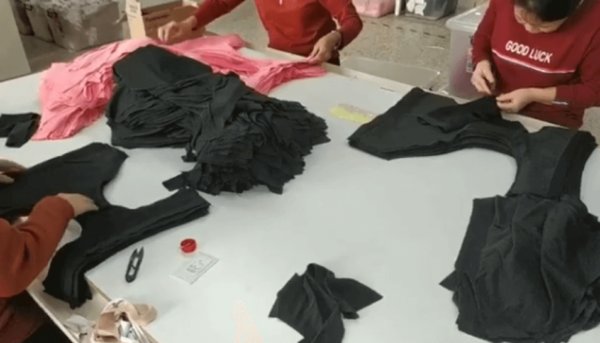
Okay, so the landscape is complex and changing. How do you, as a lingerie distributor or brand, actually deal with this? It's about being smart and flexible. Chasing the absolute lowest cost without considering the bigger picture can backfire. Quality consistency is paramount for your brand reputation.
Building Supply Chain Flexibility
The key is flexibility. You need the ability to adjust sourcing based on tariff changes or other disruptions. The best way I've found to achieve this is by partnering with suppliers who have production capabilities in multiple strategic locations. For example, our HAVING model, with established factories in both Shantou, China, and Bangladesh, gives our clients exactly this flexibility. If tariffs spike for China, we can shift relevant production to Bangladesh. If new risks emerge for Bangladesh, we have the stable, experienced base in China to rely on. This dual capability acts as a built-in shock absorber, providing unmatched supply chain security in volatile times.
Choosing Reliable Suppliers
It's not just about location; it's about the supplier themselves. You need partners who are financially stable and have robust production systems. Can they handle fluctuating raw material prices or unexpected events without disrupting your supply? Do they have proven quality control systems? We implemented identical QC measures, cross-facility training, and unified management systems in both our China and Bangladesh facilities to ensure unwavering consistency. Ask potential suppliers tough questions about their stability, capacity, defect rates, and quality track record. Get references!
Balancing Cost and Quality
It's tempting to focus only on the 15-16% cost savings from tariff avoidance. But sacrificing quality will damage your brand. Finding that sweet spot between a competitive price and the quality your customers expect is vital. While Bangladesh offers cost advantages, ensure your partner there maintains high standards, comparable to what you expect from China for standard products. This requires rigorous, ongoing quality monitoring and clear communication. That’s why our experienced China team actively manages and oversees the quality in our Bangladesh facility, ensuring you get the best of both worlds.
What Are the Real Risks and How Can You Manage Them?
Concerned about political instability, quality risks, or logistics delays when sourcing from new regions? Understanding and planning for risks like these is crucial for smooth operations.
Key risks include political/labor instability, infrastructure limits (power), potential policy changes (tariffs, LDC status), and logistics delays. Manage risks via multi-location sourcing (like HAVING's China/BD model), strong supplier vetting, contingency planning, and safety stock.
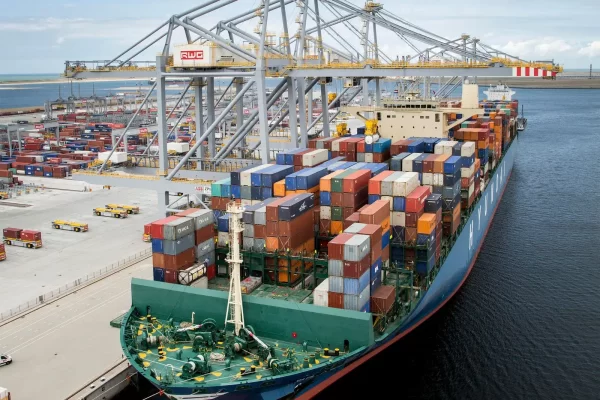
Let's be honest, shifting production, especially to developing countries, involves risks. Ignoring them is asking for trouble. Based on our experience setting up and running the Bangladesh facility over the past five years, we've learned how to manage these effectively, ensuring continuity for our clients even during challenging times like the 2023 labor demonstrations there.
Identifying Potential Risks
Several factors need careful consideration when looking at Bangladesh. Political stability can fluctuate, especially around elections, and occasional labor unrest can occur. Infrastructure, while improving, can sometimes pose challenges like power reliability (though our facility is in a modern park with backup generation). We also discussed the potential long-term changes in trade status (like Bangladesh graduating from LDC status) and the ever-present possibility of new tariffs globally. Logistics can also be slower or less direct compared to China (typically 45-60 days lead time vs 30-45 days from China), requiring longer planning horizons.
Mitigation Strategies That Work
So, how do we handle this at HAVING for our clients?
- Dual Facility Advantage: This is our biggest risk mitigator. If major issues hit one location, we can shift production to the other. This provides unparalleled supply chain security.
- Strategic Location & Compliance: Our Bangladesh factory is in a modern industrial park with good infrastructure and safety systems. We maintain key certifications (like ISO 9001, SA8000, WRAP, BSCI) ensuring ethical and safe practices.
- Material Sourcing: We have backup suppliers and sometimes leverage our China supply chain for critical materials if needed, ensuring material availability.
- Logistics Planning: We work with multiple shipping partners and plan logistics carefully, building in buffers to minimize delays.
- Inventory & Phased Approach: For clients transitioning, we often recommend a phased approach, starting with simpler products, and potentially adjusting safety stock levels initially to account for longer lead times.
No location is risk-free, but with proactive planning and built-in flexibility like ours, these risks are very manageable. Our experience shows Bangladesh can be both cost-effective and reliable when managed correctly.
What's the Smartest Way to Explore Bangladesh Production?
Ready to explore alternatives but unsure where to start? Jumping in without a plan can lead to problems. A careful, step-by-step approach is best for success.
Start with a pilot project for simpler, high-volume items. Evaluate potential partners thoroughly (certifications, visits, references). Test quality via samples before placing a small trial order (3k-5k pcs) to validate the entire process.

Moving production feels like a huge step, but it doesn't have to be overwhelming. Based on guiding many clients through this transition, I strongly recommend a structured, cautious approach. Don't try to move everything at once. This minimizes risk and allows you to build confidence.
The Pilot Project Approach
The best way to start is with a pilot project. Choose one or two of your simpler, high-volume products – maybe basic cotton panties or briefs, items where Bangladesh excels. These are usually the easiest to transfer and allow you to see the potential 15-16% landed cost savings firsthand. This lets you test the waters with lower risk before committing more complex styles.
Evaluating Potential Partners
Finding the right partner is critical. Don't just look at price.
- Check Certifications: Look for internationally recognized standards like ISO 9001 (Quality), SA8000/WRAP/BSCI (Social Compliance). These show a commitment to operational excellence and ethical practices.
- Visit (or Virtual Tour): Seeing the facility, operations, and working conditions gives you invaluable insight into their capabilities and management systems. Pay attention to QC processes and organization.
- Ask for References: Talk to existing clients, especially those with similar products. Get their honest feedback on communication, problem-solving, and reliability.
The Trial Order Process
Once you've selected a partner:
- Sampling: Start with development samples based on your tech packs. Ensure they meet your quality standards before proceeding. This tests their technical execution.
- Trial Order: Place a limited trial order, typically 3,000-5,000 pieces. This tests the entire production process – sourcing, manufacturing, QC, packing, shipping – on a manageable scale.
- Evaluate Performance: After the trial, assess everything – final product quality, delivery reliability, communication responsiveness, and verify the actual cost savings. Use this to decide on scaling up production volumes or adding more product categories.
At HAVING, we guide clients through this exact process, using our structured system and experienced teams in both China and Bangladesh to make the transition smooth and successful. Our six-step process ensures transparency and minimizes disruption.
Conclusion
Global tariffs and costs are reshaping lingerie sourcing. Adapting requires flexibility, reliable partners like HAVING, and balancing cost savings with quality to navigate this new landscape successfully.
My Role
HAVING(China)Ltd is one leading fashion lingerie manufacturer, founded in South of China, Shantou City, Guangdong Province,our annual sale is 30 million USD per year by supplying over 3000 stores.
Our factory has continually strived to create products that follow a body-before-fabric philosophy, placing equal emphasis on comfort, aesthetics and quality.
HAVING develops an eclectic offering of made-to-order products, including extensive lines of mens’ underwear and intimate apparel for women, such as bras, panties, shapewear and swimwear.
